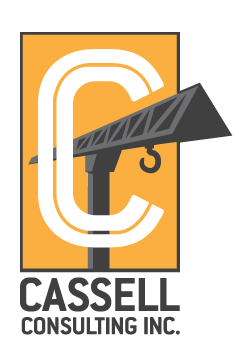Introduction
An assembly is defined as a group of items required to complete a particular unit of work. This should be the basis of thought about assemblies. If you think to large about an assembly it can become too cumbersome and less efficient. If you think too small about assemblies you will end up making a bunch of small one-dimensional assemblies that are only slightly more efficient than item takeoff.
It is important to remember the goal with Timberline – Efficiency. At all times you must keep this present in your mind when designing a database. You are not accomplishing anything special with Timberline if you are just copying and pasting information from spreadsheet to spreadsheet.
Audience
Anyone who uses Timberline Estimating for line-item costing can benefit from assemblies. It is rare to find a user who could not benefit from asssemblies.
Features
A few things you can do with an assembly.
Undo / Refactor
The assembly audits and tracks all takeoff that is performed. The variables that you feed the assembly are all saved and can be reviewed or replaced at any time. This will regenerate the items currently on the spreadsheet if needed.
This is the closest thing Timberline Estimating has to an undo feature. Using item takeoff methods do not have a way to review how it got there or a way to audit how you came to that quantity.
A scenario,
You are estimating a complex slab on grade building. When you finish generating all the items from your database, manually tallying up and entering quantities of all of your line items. You get a revision from the project owner stating that the slab is to be extended five feet on one side. How will you fix this? Probably come up with a hack to add more material to cover those five feet, or recalculate that whole part of the building. Crap!
Using an assembly, you review the assembly entries that are time stamped make the measurement changes appropriate for that new size, click replace pass and that is all. Need I explain more? Of course, read on!
Organization
Tired of trying to remember all of the line items that go into a concrete slab? Even more tired of trying to remind another younger (or older!) estimator all of the items in that slab? Assemblies can help with the even most sophisticated item combinations. It will give a consistent output order and calcualtion to every estimate you produce.
Templating
You can use an assembly for a template. It can generate zero quantity items on to an estimate(*option). Just fill in the quantities. This is a good way to get away from copying an estimate over and over as a template.
Scope of Assemblies
The most important step (IMO) in the design of an assembly is the scope. I define the scope of an assembly as such; develop the enough flexibility to accomodate all variations of a particular unit of work. A tough concept to explain but you will understand what I mean when you grasp how large or small, simple or complex, an assembly can be.
Components of Assemblies
An assembly has a few parts that you have to define when you build one. The more of these you have defined ahead of time the faster it can be built and more accurate it will be. Don’t be tempted to shoot from the hip and build it as you go, write it out on paper or a white board , plan the scope, then make sure you have all of the following list ready before you start. Experimenting is good, just make the real one count…
[fusion_builder_container hundred_percent=”yes” overflow=”visible”][fusion_builder_row][fusion_builder_column type=”1_1″ background_position=”left top” background_color=”” border_size=”” border_color=”” border_style=”solid” spacing=”yes” background_image=”” background_repeat=”no-repeat” padding=”” margin_top=”0px” margin_bottom=”0px” class=”” id=”” animation_type=”” animation_speed=”0.3″ animation_direction=”left” hide_on_mobile=”no” center_content=”no” min_height=”none”]

- Assembly
- The number of the assembly. Alphanumeric.
- Description & Notes
- Come up with a list of every piece of information that an estimator will need to complete this assembly. Make sure it is defined as per the scope you defined. Describe the process.
- Assembly Calculation
- Does the assembly have a unit to associate with it? (lf, sqft, pcs, each). Provide a calculation (formula) to get this quantity. The summary of the assembly will show the $/unit of the whole assembly.
- Items
- Most important to have ready previous to starting. Make sure you have all of the proper items in your database before you start this procedure. Seem like a lot of work? It is. I can help you do it faster, just ask.
- Calculation of Item takeoff quantity
- The assembly wants to know how to calculate the takeoff quantity for the item. I will have a whole section below to describe this.
- Notes
- Make sure it is defined as per the scope you defined.
- Test…
- Opens a window with a demo of the used variables. Does not display item output. Shows only variables a user would see doing an assembly takeoff.
Facets of Assembly Design
Flexibility
Designing the assembly with flexibility in mind is important. Imagine creating an assembly for a 2×4 10′ wall. You can program in all of the stud spacing at 16″ OC and top and bottom plate calcs (including treated bottom plate), all the assembly needs from the user is the length of the wall. Sounds good right? That is exactly where you want to be with the first draft of your assembly. Now we can either proceed two ways with this assembly.
Scenario One
Create a copy of this assembly and call it 2×6 10′ wall now swap out all of the 2×4 material with 2×6 and any other miscellaneous changes. Now you have two assemblies to manage. When you do it this way you will be attempting to create an assembly for every variation on the 2×4 stud wall that you need. Eventually when you have all of these built for the majority of your needs, it will be more efficient. Until then, your less experienced estimators with Timberline will struggle with single line item takeoffs of all the material and some manual calculation. My next tutorial will be basic assembly creation. We will be covering mostly this scenario.
Scenario Two
Create an assembly called Stud Wall. We will extend the assembly to cover all variations of the stud wall described in scenario one and all other combinations available. We will use a few advanced concepts and ask for a few more variables from the user (stud spacing, wall height, wall thickness, bottom plate treated, corners, windows openings, doors openings). This will take much more time to set up and design, but in the long run you can save development time and forethought of planning and managing a large number of assemblies. I will write a tutorial on how to accomplish this in my advanced assembly creation tutorial, ask if you want it sooner.
Depth
As stated above, flexibility comes at a price, time and effort up front. This is true with all of the Estimating system. Make sure you pay attention to how much depth goes into each assembly. Scenario two’s assembly described above is what I would call a “deep” assembly. If it is too complicated for your estimators, it is not efficient. Remember to help your estimators become more familiar with the workings of the assembly takeoff window to help ease these issues. Sometimes it is just easier to make another assembly that keeps the number of questions minimal.
Variables
Variables are at the core of how the assembly functions. You use variables inside of formulas or calculation windows. Think of them as cells in a spreadsheet. Instead of writing C1 / (C2 /12) like in Excel, you will give each variable a name. A formula looks like this in Timberline Wall Length / (Stud Spacing /12).
Calculations (assembly formulas)
An important thing to remember in general about Timberline Estimating, formulas always calculate to the item’s takeoff quantity. They do not work anywhere else. You can define a formula on an item but you can use a different one in an assembly. There are four types of calculations you can use on each item.
List of calculation types for assembly and their basic use.
- Item Formula
- This is the default if the item has a formula attached.
- Selected Formula
- Choose a particular formula from the database. It must be created beforehand.
- Custom Calculation
- Allows you to create a custom formula embedding any other existing variables/formulas. Does not save for reuse.
- Factor
- This will prompt you for a numeric factor. It will basically take the “assembly calculation” from above and multiply it times this factor.
Conclusion
This tutorial was designed to give users an in-depth insight on how to approach designing assemblies. I am in the process of building several custom assemblies for clients right now. As I produce them I will document and share the process. Thanks for reading! Please let me know if this was helpful.[/fusion_builder_column][/fusion_builder_row][/fusion_builder_container]




